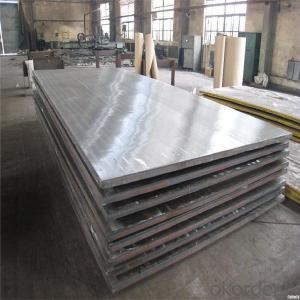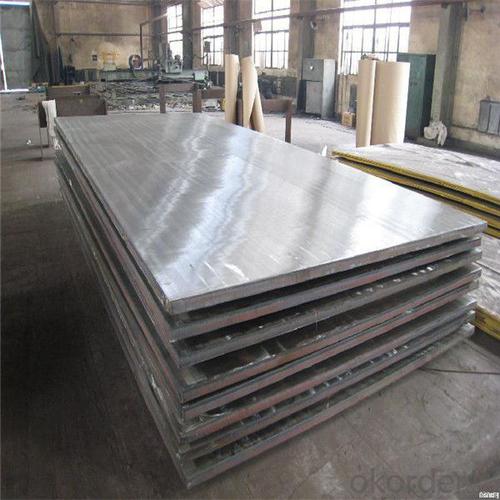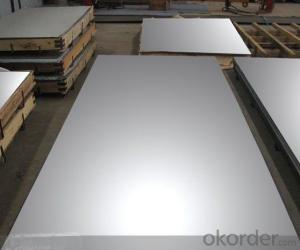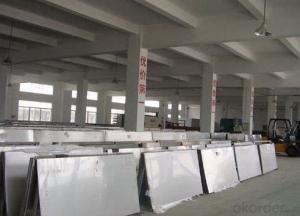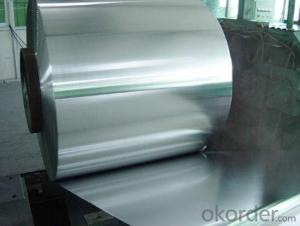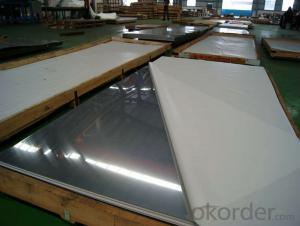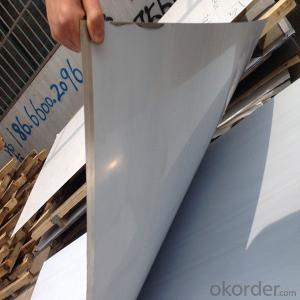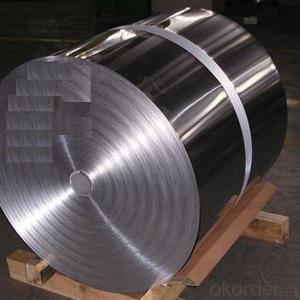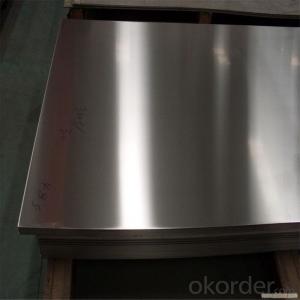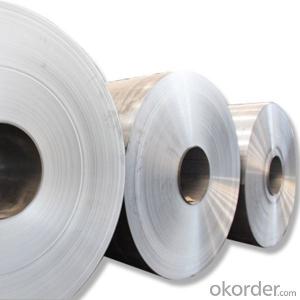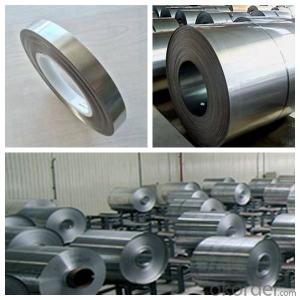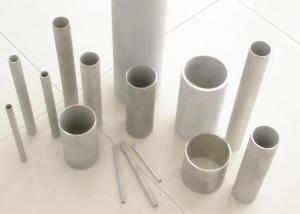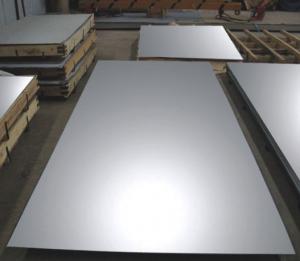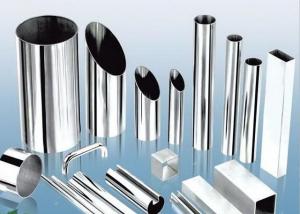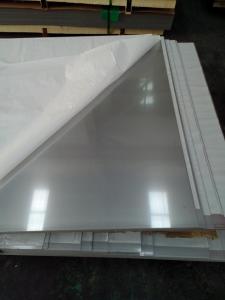TISCO 304L Stainless Steel Sheet from Wuxi, China
- Loading Port:
- Shanghai
- Payment Terms:
- TT OR LC
- Min Order Qty:
- 2 m.t.
- Supply Capability:
- 20000 m.t./month
OKorder Service Pledge
OKorder Financial Service
You Might Also Like
Specification
TISCO 304L stailness steel sheet
Material: 304L
Standard: ASTM, AISI,JIS, DIN,GB
Payment : Usually 30% of the amount by T/T as deposit , and the balance money shall be paid by T/T after got the faxed B/L.Or L/C at sight .
Package: Standard export package ,or based on the customer requirement.
Application: construction.machinebuilding,container manufacturing,shipbuilding,bridges ,etc.
Cold rolled stainless steel sheet
Thickness : | 0.3mm-3.0mm |
Width : | 1000mm/1219mm/1500mm |
Length : | 2000mm/2438mm/4000mm/6000mm or cutting randomly |
Model size : | 0.3mm-3.0mm(TK)*1000mm(W)*2000mm(L) 0.3mm-3.0mm(TK)*1219mm(W)*2438mm(L) 0.3mm-3.0mm(TK)*1500mm(W)*4000mm(L) |
Surface : | 2B, BA, 8K, HL, 2D, Golden 8K, Black 8K etc. |
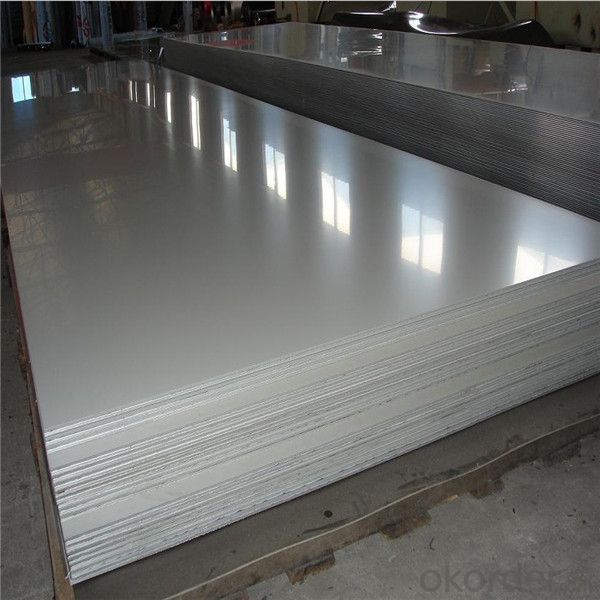
Hot rolled stainless steel sheet
Thickness : | 3.0mm-120mm |
Width : | 1219mm/1500mm/1800mm/2000mm |
Length : | 2000mm/2438mm/4000mm/6000mm or cutting randomly |
Model size : | 3.0mm-120mm(TK)*1219mm(W)*2438mm(L) 3.0mm-120mm(TK )*1500mm(W)*6000mm(L) 3.0mm-120mm(TK) *1800mm(W)*6000mm(L) 3.0mm-120mm(TK) *2000mm(W)*6000mm(L) |
Surface : | Surface : No.1/No.4 |
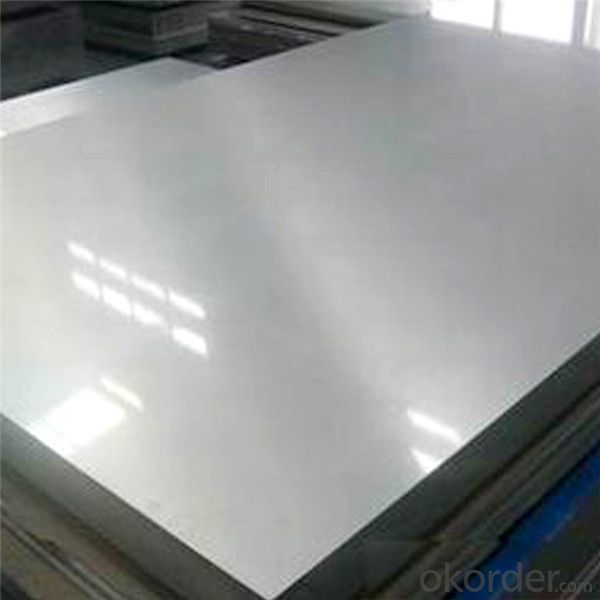
The operating philosophy of our company : high quality and best service and competitive price and prompt delivery .We sincerely welcome the old and new customers to inquiry the price . any questions and needs you have , pls don't hesitate to contact us anytime .
- Q: What are the different types of stainless steel sheets?
- There is a variety of stainless steel sheets to choose from, each with its own unique properties and uses. Here are some of the most commonly used types: 1. Austenitic stainless steel sheets are widely used due to their excellent corrosion resistance and high ductility. They are non-magnetic and can be easily formed, making them suitable for various applications like kitchen equipment, architectural structures, and automotive components. 2. Ferritic stainless steel sheets have a lower chromium content compared to austenitic stainless steel. They offer good corrosion resistance in specific environments and are often used in applications that require high temperature resistance, such as industrial ovens and exhaust systems. 3. Martensitic stainless steel sheets are known for their high strength and hardness. They are magnetic and provide good corrosion resistance, making them suitable for applications that require both strength and corrosion resistance, like knives, turbine blades, and valve parts. 4. Duplex stainless steel sheets combine the properties of both austenitic and ferritic stainless steels. They have excellent corrosion resistance, high strength, and good weldability. Duplex stainless steel is commonly used in industries such as chemical processing, oil and gas, and marine environments. 5. Precipitation-hardening stainless steel sheets are heat treatable, offering high strength and excellent corrosion resistance. They are commonly used in applications that require a high strength-to-weight ratio, such as aerospace components, springs, and shafts. These examples highlight the variety of stainless steel sheets available. The choice of which type to use depends on specific application requirements, considering factors such as corrosion resistance, strength, formability, and cost.
- Q: Are stainless steel sheets resistant to pitting?
- Yes, stainless steel sheets are resistant to pitting. Stainless steel is known for its excellent corrosion resistance, and this includes resistance to pitting corrosion. Pitting corrosion is a localized form of corrosion that leads to the formation of small pits or holes on the surface of metal. However, stainless steel contains chromium, which forms a passive oxide layer on the surface, preventing the metal from further corrosion. This oxide layer acts as a barrier and protects the stainless steel from pitting. Additionally, the composition and specific grade of stainless steel can further enhance its resistance to pitting, making stainless steel sheets a reliable choice for various applications where corrosion resistance is crucial.
- Q: Can the tile be directly attached to the stainless steel plate?
- Can be posted directly, with ordinary acid glass glue on the line, the real stainless acid, acid, glass, adhesive force a little stronger.
- Q: Are stainless steel sheets resistant to erosion corrosion?
- Yes, stainless steel sheets are highly resistant to erosion corrosion due to their inherent properties such as chromium content, which forms a protective oxide layer that prevents corrosion.
- Q: Are stainless steel sheets resistant to UV rays?
- Yes, stainless steel sheets are resistant to UV rays. Stainless steel is known for its durability and corrosion resistance, and this extends to its ability to withstand exposure to UV rays. The chromium content in stainless steel forms a protective oxide layer on the surface, which helps prevent the metal from oxidizing or corroding when exposed to sunlight. This oxide layer acts as a barrier that shields the stainless steel from UV rays, making it highly resistant to the damaging effects of prolonged sun exposure. Therefore, stainless steel sheets are an excellent choice for outdoor applications where UV resistance is a requirement, such as roofing, cladding, and architectural elements.
- Q: What's the surface of the 304 stainless steel matte board?
- NO.3 NO.2D and NO.2B coarse grinding material, 100~200# (units) of the abrasives abrasive belt grinding, building materials, kitchen appliances, NO.4 NO.2D and NO.2B intermediate grinding material, polishing surface with abrasive belt grinding 150~180# tobe obtained, this is universal, a mirror reflection of the visible with bright surface. The 'grain'NO.240 NO.2D and NO.2B fine grinding material, grinding of kitchen utensils with 240# Abrasives Abrasive BeltNO.320 NO.2D and NO.2B will be very fine grinding material, grinding of 320# abrasives abrasive belt.NO.400 gloss close to BA, NO.2B material, with 400# polishing wheel for research, general timber, building materials, kitchen utensilsHL abrasive material grinding hairline appropriate particle size of hairline grinding (150~240#) the abrasives of many buildings, building materialsNO.7 is close to mirror finish, and is polished with 600# rotary polishing wheels. It is used for decoration and decorationNO.8 mirror grinding, mirror polishing wheel, grinding, mirror, decoration
- Q: What is the difference between cold rolled and hot rolled stainless steel sheets?
- The main difference between cold rolled and hot rolled stainless steel sheets lies in the manufacturing process and the resulting surface finish. Cold rolled stainless steel sheets are produced by rolling the steel at room temperature. This process involves passing the steel through a series of rollers to reduce its thickness and achieve the desired shape. Cold rolling results in a smoother and more refined surface finish, with less surface defects and a tighter tolerance on thickness. The cold rolling process also enhances the strength and hardness of the stainless steel sheet. On the other hand, hot rolled stainless steel sheets are manufactured by heating the steel above its recrystallization temperature and then rolling it through a series of rollers. This process is typically carried out at a higher temperature than cold rolling, which results in a rougher surface finish. Hot rolling is generally used for thicker sheets and produces a more variable thickness and hardness compared to cold rolling. In terms of applications, cold rolled stainless steel sheets are commonly used in industries that require precise measurements, such as automotive, aerospace, and construction. The smoother surface finish of cold rolled sheets makes them suitable for applications where aesthetics and surface quality are important. Hot rolled stainless steel sheets, on the other hand, are often used in applications where strength and durability are the primary requirements, such as structural components in buildings, industrial machinery, and equipment. In summary, the main differences between cold rolled and hot rolled stainless steel sheets are the manufacturing process, resulting surface finish, and their respective applications. Cold rolled sheets offer a smoother surface finish and tighter thickness tolerance, while hot rolled sheets have a rougher surface finish and are more suitable for applications requiring strength and durability.
- Q: Are stainless steel sheets suitable for high-temperature applications?
- Yes, stainless steel sheets are suitable for high-temperature applications. Stainless steel is known for its excellent heat resistance properties, making it an ideal material for use in high-temperature environments. It can withstand extreme heat without losing its strength or structural integrity, making it highly durable and reliable. Stainless steel sheets are often used in industries such as aerospace, automotive, and manufacturing, where high temperatures are common. Additionally, stainless steel sheets have low thermal expansion, which means they can maintain their shape and dimensions even when exposed to fluctuating temperatures. This makes stainless steel sheets a preferred choice for applications where dimensional stability is crucial. Overall, stainless steel sheets are a suitable option for high-temperature applications due to their exceptional heat resistance, durability, and dimensional stability.
- Q: Can stainless steel sheets be cut to custom sizes?
- Indeed, custom sizes are achievable when it comes to cutting stainless steel sheets. Stainless steel possesses exceptional versatility, enabling effortless fabrication into diverse shapes and dimensions to fulfill particular specifications. A multitude of techniques including shearing, laser cutting, water jet cutting, and plasma cutting are available for the purpose of cutting stainless steel sheets. These methods guarantee meticulous and precise cuts, guaranteeing that the stainless steel sheets are tailored to the desired measurements. Regardless of whether it is for industrial, commercial, or residential purposes, customization of stainless steel sheets to suit specific requirements is easily attainable.
- Q: What are the different types of textured finishes available for stainless steel sheets?
- There are several different types of textured finishes available for stainless steel sheets, each offering a unique aesthetic appeal and functional benefits. Some of the most common textured finishes include: 1. Brushed Finish: This is the most widely used textured finish for stainless steel sheets. It is achieved through a process of brushing the surface with abrasive materials, creating a distinctive pattern of parallel lines. The brushed finish provides a smooth and elegant appearance while also masking scratches and fingerprints. 2. Embossed Finish: In this type of textured finish, a pattern is stamped onto the stainless steel sheet, creating a raised design. Embossed finishes can range from simple patterns like diamonds or squares to more complex designs. This finish adds depth and visual interest to the metal surface. 3. Bead Blast Finish: This finish is achieved by propelling fine glass beads or ceramic particles onto the stainless steel sheet at high pressure. It creates a uniform matte appearance with a slightly rough texture. Bead blasting is often used for decorative purposes, as it can give stainless steel a unique and contemporary look. 4. Linen Finish: Also known as a cross-hatch finish, the linen finish features a pattern of fine parallel lines that intersect, resembling the texture of linen fabric. This finish is achieved through a process of mechanical rolling or brushing. It provides a textured surface that is both visually appealing and resistant to scratches. 5. Satin Finish: Similar to brushed finish, the satin finish is achieved by brushing the stainless steel sheet with abrasive materials. However, the satin finish has a smoother appearance with a less pronounced pattern of parallel lines. It offers a subtle shine and a refined look, making it a popular choice for architectural and decorative applications. 6. Hammered Finish: This textured finish is created by pounding the stainless steel sheet with a ball-peen hammer or a similar tool. The result is a surface with a unique hammered pattern that adds a rustic and artisanal touch to the metal. Hammered finishes are commonly used in interior design and decorative applications. Overall, the choice of textured finish for stainless steel sheets depends on the desired aesthetic, functionality, and application. Each finish has its own distinct appearance and can enhance the visual appeal of stainless steel while also providing additional benefits such as scratch resistance and fingerprint hiding.
Send your message to us
TISCO 304L Stainless Steel Sheet from Wuxi, China
- Loading Port:
- Shanghai
- Payment Terms:
- TT OR LC
- Min Order Qty:
- 2 m.t.
- Supply Capability:
- 20000 m.t./month
OKorder Service Pledge
OKorder Financial Service
Similar products
Hot products
Hot Searches
Related keywords
